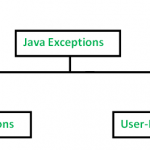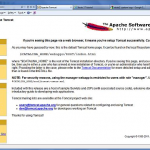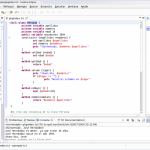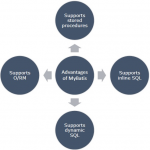在 Java 中,您使用 HashMap 将项目存储在键/值对中。您可以使用项目的密钥访问存储在 aHashMap中的项目,该密钥对于每个项目都是唯一的。
在本文中,我们将讨论 a 的特性HashMap、如何创建 aHashMap以及我们可以用来与存储在其中的数据进行交互的不同方法。
Java中HashMap的特点是什么?
在使用 HashMap 之前,了解它们的工作原理很重要。
以下是 a 的一些功能HashMap:
- 项目存储在键/值对中。
- 添加时,项目不会保持任何顺序。数据是无序的。
- 在存在重复键的情况下,最后一个将覆盖其他键。
- 使用包装类而不是原始数据类型来指定数据类型。
如何在 Java 中创建 HashMap
为了创建和使用 HashMap,您必须首先导入java.util.HashMap包。那是:
import java.util.HashMap;以下是创建新的语法HashMap:
HashMap<KeyDataType, ValueDataType> HashMapName = new HashMap<>();让我们解释一下上述语法中的一些关键术语。
KeyDataType表示将存储在HashMap.ValueDataType表示将存储在HashMap.HashMapName表示 的名称HashMap。
这是一个简化术语的示例:
HashMap<Integer, String> StudentInfo = new HashMap<>();在上面的代码中,我们创建了一个HashMap被调用的StudentInfo. 将存储在其中的键HashMap都是整数,而值将是字符串。
您会注意到,在指定键和值的数据类型时,我们使用的是包装类而不是原始类型。这就是 HashMap 的工作方式。
在我们深入示例之前,这里有一个包装类及其在 Java 中对应的原始数据类型的列表:
Java 中的包装类和原始类型
| WRAPPER CLASSES | PRIMITIVE DATA TYPES |
|---|---|
| Integer | int |
| Character | char |
| Float | float |
| Byte | byte |
| Short | short |
| Long | long |
| Double | double |
| Boolean | boolean |
| 包装类 | 原始数据类型 |
|---|---|
| 整数 | 整数 |
| 特点 | 字符 |
| 漂浮 | 漂浮 |
| 字节 | 字节 |
| 短的 | 短的 |
| 长 | 长 |
| 双倍的 | 双倍的 |
| 布尔值 | 布尔值 |
在使用 HashMaps 时,我们使用了包装类。
Java中的HashMap方法
在本节中,我们将讨论一些在使用 HashMap 时可以使用的有用方法。
您将学习如何在HashMap.
如何HashMap在 Java中添加项目
要将项目添加到 a HashMap,我们使用该put()方法。它接受两个参数——要添加的项目的键和值。
以下是它的工作原理:
import java.util.HashMap;
class HashMapExample {
public static void main(String[] args) {
HashMap<Integer, String> StudentInfo = new HashMap<>();
StudentInfo.put(1, "Ihechikara");
StudentInfo.put(2, "Jane");
StudentInfo.put(3, "John");
System.out.println(StudentInfo);
// {1=Ihechikara, 2=Jane, 3=John}
}
}在上面的代码中,HashMap被称为StudentInfo。我们将键指定为整数,而值是字符串:HashMap<Integer, String>.
要将项目添加到 中HashMap,我们使用了以下put()方法:
StudentInfo.put(1, "Ihechikara");
StudentInfo.put(2, "Jane");
StudentInfo.put(3, "John");我们添加了三个项目,每个项目都有一个整数作为键,一个字符串作为它们的值。
如何HashMap在 Java中访问项目
您可以使用该get()方法访问存储在HashMap. 它有一个参数——被访问项目的键。
这是一个例子:
import java.util.HashMap;
class HashMapExample {
public static void main(String[] args) {
HashMap<Integer, String> StudentInfo = new HashMap<>();
StudentInfo.put(1, "Ihechikara");
StudentInfo.put(2, "Jane");
StudentInfo.put(3, "John");
System.out.println(StudentInfo.get(2));
// Jane
}
}在上面的示例中,StudentInfo.get(2)返回键为 的值2。“简”被打印到控制台。
如何在 Java 中更改 HashMap 中项目的值
要更改 a 中项目的值HashMap,我们使用该replace()方法。它有两个参数——要更改的项目的键和要分配给它的新值。
import java.util.HashMap;
class HashMapExample {
public static void main(String[] args) {
HashMap<Integer, String> StudentInfo = new HashMap<>();
StudentInfo.put(1, "Ihechikara");
StudentInfo.put(2, "Jane");
StudentInfo.put(3, "John");
// Update key 1
StudentInfo.replace(1, "Doe");
System.out.println(StudentInfo);
// {1=Doe, 2=Jane, 3=John}
}
}当HashMap上面得到分配给它的项目时,键为的项目1的值为“Ihechikara”。
我们使用以下方法将其值更改为“Doe” replace():StudentInfo.replace(1, "Doe");
如何HashMap在 Java中删除项目
您可以使用该remove()方法从HashMap. 它接受一个参数——要删除的项目的键。
import java.util.HashMap;
class HashMapExample {
public static void main(String[] args) {
HashMap<Integer, String> StudentInfo = new HashMap<>();
StudentInfo.put(1, "Ihechikara");
StudentInfo.put(2, "Jane");
StudentInfo.put(3, "John");
// Remove key 1
StudentInfo.remove(1);
System.out.println(StudentInfo);
// {2=Jane, 3=John}
}
}使用该remove()方法,我们删除了键为 的项目1。
如果要HashMap一次删除 a 中的所有项目,请使用该clear()方法。那是:
import java.util.HashMap;
class HashMapExample {
public static void main(String[] args) {
HashMap<Integer, String> StudentInfo = new HashMap<>();
StudentInfo.put(1, "Ihechikara");
StudentInfo.put(2, "Jane");
StudentInfo.put(3, "John");
// Remove all items
StudentInfo.clear();
System.out.println(StudentInfo);
// {}
}
}还有其他有用的方法,例如:
containsKeytrue如果 a 中存在指定的键,则返回HashMap。containsValuetrue如果 a 中存在指定的值,则返回HashMap。size()它返回 a 中的项目数HashMap。isEmpty()true如果 a中没有项目,则返回HashMap,依此类推。
概括
在这篇文章中,我们谈到了HashMapJava。首先,我们谈到了 a 的特点HashMap。
然后,我们通过代码示例了解了如何创建HashMap和一些可用于与存储在其中的数据进行交互的方法。
快乐编码!





